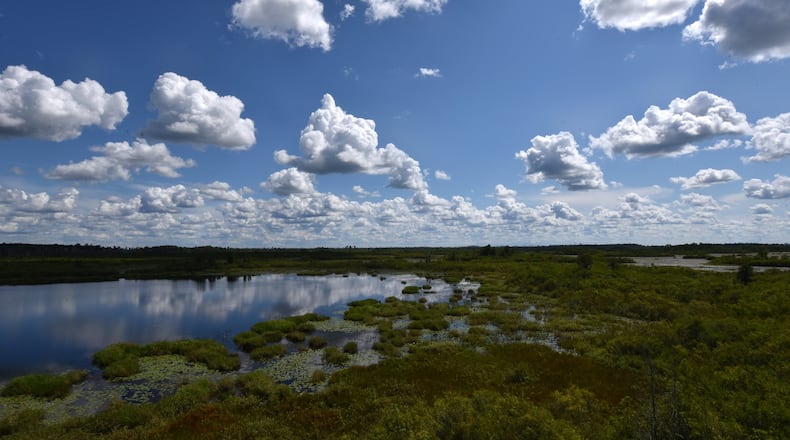Some of my fondest memories of growing up in Georgia involve the great outdoors: canoeing down the Flint River, hiking in the North Georgia mountains and laying down in the body of a canoe as my mom and dad paddled slowly through the Okefenokee Swamp. As we made our way through the vast 438,000-acre (or 680 square mile) peat-filled wetland that is situated along the Georgia-Florida line, I would stare up into the sky, trees laden with vines coming in and out of my field of vision.
The waterways passed floating islands made from peat that had accumulated over thousands of years. Snakes hung down from vines, occasionally dropping into boats (at least, that is what my parents told me). I was ever vigilant to make sure no snakes made their way into our canoe, but I spied them along the shore or in the water, along with turtles, alligators and egrets.
During the 1970s, when we entered the swamp there was a massive alligator with a red mark on his head sunning himself on a bank near a fish-cleaning hut. Game wardens tried to relocate him several times, but he always made his way back. I kept my distance, but my father, an environmental studies professor, didn’t mind getting close for a picture. One day, when my dad’s canoe tipped over, I was positive that alligators were going to eat him alive. I held my breath until he had climbed back in, safe and sound.
Credit: Ambassador Callista Gingrich
Credit: Ambassador Callista Gingrich
The Okefenokee Swamp is more than 7,000 years old and is the largest National Wildlife Refuge east of the Mississippi River. It is “one of the world’s largest naturally driven freshwater ecosystems,” according to the U.S. Fish and Wildlife Service, which manages it. To visit the swamp is to step into another world, one bursting with more than 600 plant species and home to “threatened and endangered species, such as red-cockaded woodpecker, wood storks, indigo snakes and a wide variety of other wildlife species.” It’s such a unique place that in 1971 it was named a “Wetland of International Importance.” There is no other place on the earth like the Okefenokee Swamp.
The Okefenokee Wilderness is one of the last large freshwater swamps that have remained largely pristine, but that could change soon if Twin Pines Mining gets approval to mine heavy minerals within three miles of the swamp’s southeast corner on a nearly square-mile-sized area. The first phase of mining could set the stage for larger operations, which could consume roughly 8,000 acres and come within 400 feet of the swamp itself. The swamp is shaped like a bowl, with a low ridge to its east serving like a dam, keeping water in the swamp. It’s on this ridge that Twin Pines Mining wants to dig.
While company officials state that the digging and groundwater pumping won’t affect the swamp, we won’t know for sure how it affects the swamp’s water table until the digging is done. Twin Pines’ mining permit indicates a significant drawdown of the groundwater. “Scientists, including those from USFWS and UGA, are highly certain that the combination of changing the structure of Trail Ridge and the drawdown of the nearby groundwater will cause the water levels of the swamp to drop,” according to Rena Ann Peck, executive director of Georgia River Network.
The question becomes this: Is it worth the risk to one of the world’s largest natural freshwater ecosystems, the fragile habitat of more than 600 plants and dozens of animal species – many of which are endangered – and the driver of tourism in the southeast corner of my home state of Georgia? In my opinion, it’s not a risk that Georgians or Georgia should take. The Okefenokee is priceless.
Recent changes in federal regulations have moved the mining permit environmental impact review oversight from The Army Corps of Engineers to the Georgia Environmental Protection Division. DuPont tried decades ago to mine near the Okefenokee Swamp but gave up after Georgians pushed back. The company ended up donating the acreage to The Conservation Fund. Much of the land eventually ended up in the Okefenokee Wildlife Refuge.
Let me be clear: I am not against mining, I am against risking irreparable damage to the irreplaceable Okefenokee Swamp. There are few decisions that have the added risk of not being able to have a redo – this is one of them. Let your elected officials know it’s not a risk you want Georgia to take. Join me in saving the priceless Okefenokee Swamp – no matter how much is offered.
Jackie Gingrich Cushman, an Atlanta-based writer, is the author of three books; her latest is “Our Broken America: Why both sides need to stop ranting and start listening.”
About the Author
Keep Reading
The Latest
Featured

